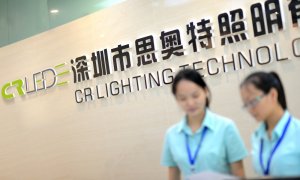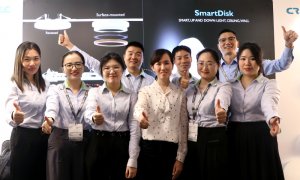1. Advantages and characteristics of LED ceiling lights
Efficient and energy-saving: Compared to traditional lighting fixtures, LED ceiling lights can generate brighter light with lower electricity consumption. Its high luminous efficiency allows LED ceiling lights to reduce more energy consumption under the same illumination, reducing household and commercial electricity costs.
Long lifespan: The lifespan of LED ceiling lights usually far exceeds that of traditional lighting equipment. The lifespan of ordinary LED ceiling lights can reach tens of thousands of hours, or even longer. This longevity not only reduces the frequency of lamp replacement, but also reduces the generation of waste, in line with the concept of sustainable development.
Environmental protection and health: LED ceiling lights do not contain harmful substances such as mercury, and do not generate ultraviolet and infrared radiation, protecting people’s health. Moreover, LED ceiling lights have relatively low energy consumption during the manufacturing process, reducing their negative impact on the environment and making them an environmentally friendly lighting choice.
Colorful: LED ceiling lights can achieve rich color effects by adjusting the ratio of luminescent materials and current. Different color temperatures and color combinations can meet different scenes and personal needs, providing users with a more personalized lighting experience.
2. Application fields of LED ceiling lights
Home lighting: LED ceiling lights have become the preferred choice for home lighting due to their simple appearance and easy installation. Not only can it provide bright light, but it can also create a warm and comfortable living environment through dimming and color temperature adjustment.
Commercial space: Due to the high brightness and color reproduction of LED ceiling lights, they are widely used in commercial spaces, such as shopping malls, office buildings, hotels, etc. Its long lifespan and low maintenance costs can reduce commercial electricity expenditure and improve energy utilization efficiency.
Public places: LED ceiling lights are also common in public places, such as schools, hospitals, libraries, etc. Its stable light efficiency and environmental characteristics enable LED ceiling lights to provide a safe and comfortable lighting environment in these places.
3. The future development trend of LED ceiling lights
Intelligence: With the development of intelligent technology, LED ceiling lights will become more intelligent. By connecting to the smart home system, users can achieve remote control of lights, timing switches, and other functions through their mobile phones or voice assistants, improving the user experience.
Higher energy efficiency: The continuous innovation of LED technology will further improve the energy efficiency of LED ceiling lights. New LED materials and more advanced manufacturing processes will promote the improvement of the luminous efficiency and light attenuation performance of LED ceiling lights.
More application scenarios: With the continuous maturity of LED technology, LED ceiling lights will further expand their application fields. For example, applied in fields such as agricultural lighting and industrial lighting, providing more efficient and energy-saving lighting solutions for different industries.
Sustainable development: In the future, the manufacturing of LED ceiling lights will place greater emphasis on sustainable development. The use of environmentally friendly materials and low energy production processes will become the mainstream trend in the manufacturing of LED lamps to reduce their impact on the environment.























